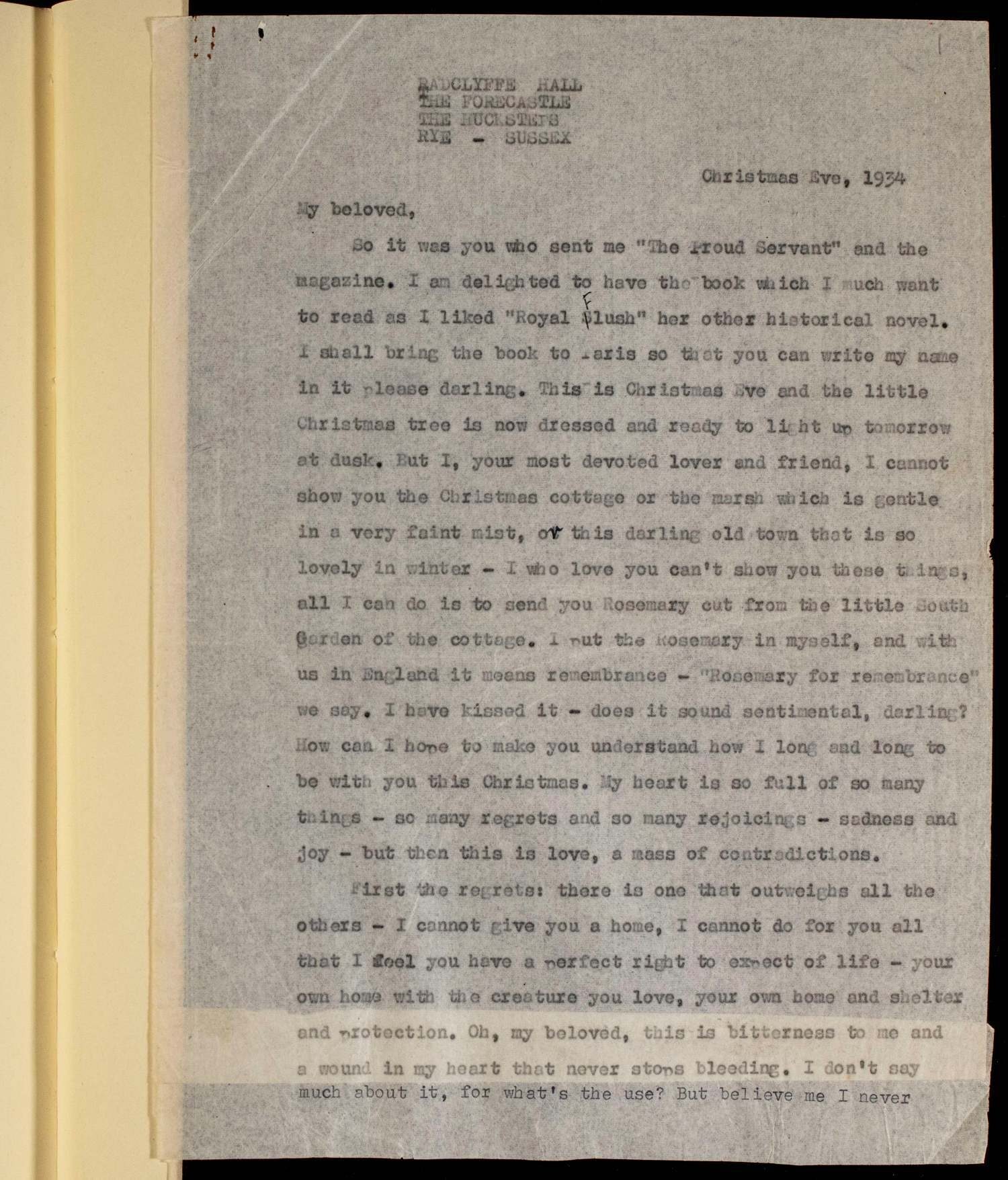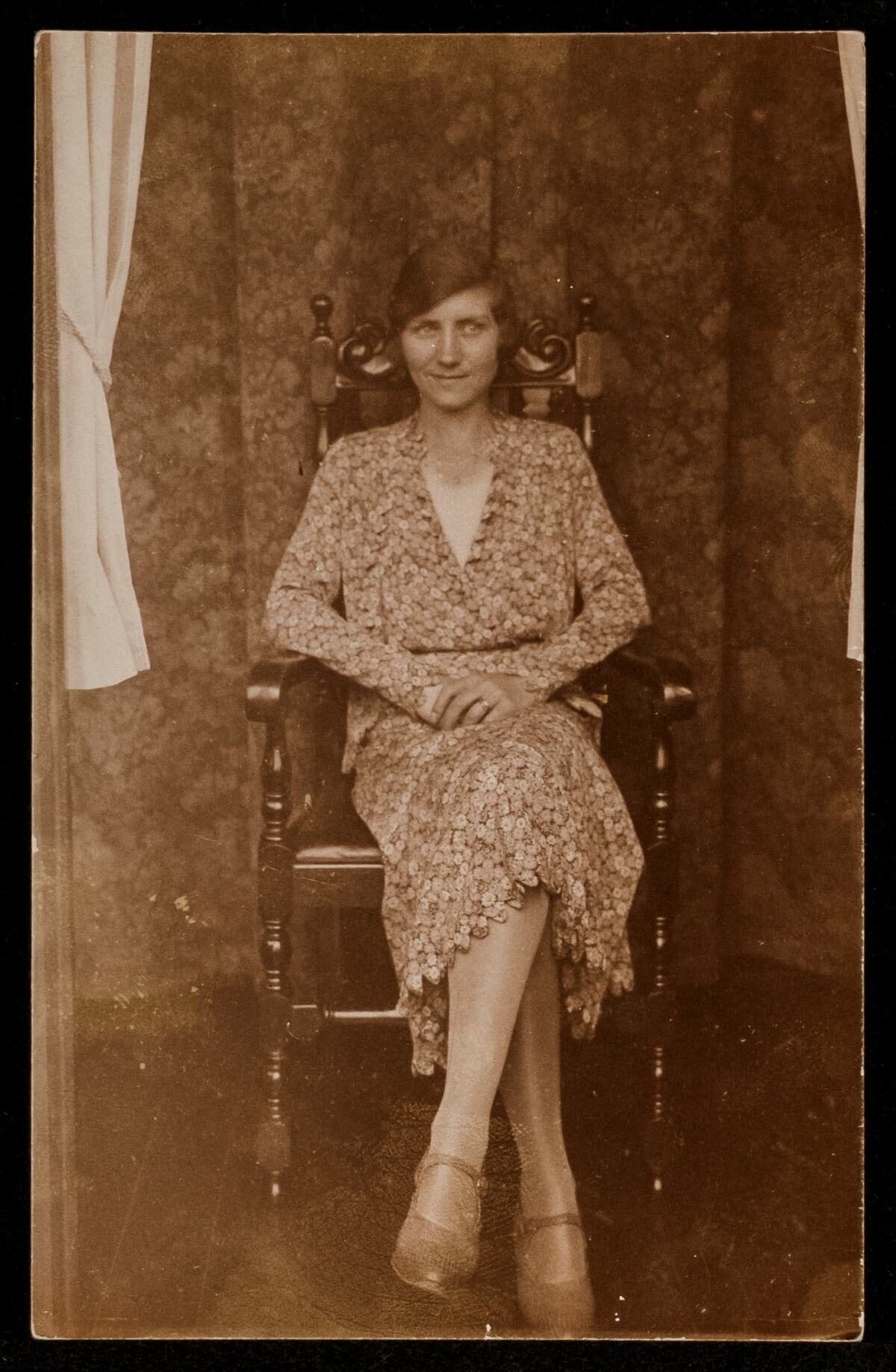Love in the Archive
Claire Langhamer, Director of the Institute of Historical Research and Professor of Modern History, University of London, discusses the topic of romantic love using resources from Women’s Voices and Life Writing, 1600-1968.
Women’s Voices and Life Writing, 1600-1968 offers access to everyday experiences and social worlds, whilst encouraging us to engage with women’s own understandings of the contexts in which they lived. This is a distinctive strength of life histories - they facilitate analytical collaboration between the researched and the researcher, sometimes even eliding the distinction between these two categories. And because this collection offers access to subjective understandings, it is also at heart a repository of feeling. Here I want to briefly focus on feelings of romantic love, an aspect of the history of emotions that has garnered particular attention over recent years.
Many of the records gathered here illuminate heterosexual courtship and marriage practices. We meet, for example, a working-class woman born at the start of the twentieth century, and interviewed a century later, who recalled a 13-year courtship that started during the First World War. Oral history interviews such as these fill the archival gaps that see working-class women’s affective lives under-represented within the historical record; gaps that exist in part because their feelings were either ignored or seen to be less important than those of other people.
If some women’s feelings have historically been dismissed, others have been vilified. This collection also draws attention to romantic practices that sit beyond what was contemporaneously regarded as appropriate or respectable. Marguerite Radclyffe Hall’s letters to her lover Evguenia Souline, written between 1934 and 1937, offer an emotional lens on intimacies between women at a time when these were often pathologized as abnormal:
How can I hope to make you understand how I long and long to be with you this Christmas. My heart is so full of so many things - so many regrets and so many rejoicings - sadness and joy - but then this is love, a mass of contradictions.

Margaret Radclyffe Hall’s letter to lover Evguenia Souline on Christmas Eve 1934. Material sourced from The University of Birmingham
In contrast, the mid-twentieth century diaries and scrapbooks of Lois Carden offer reflections on heterosexual infidelity. Her writing charts her relationship with ‘L’ - a man who was not her husband but who she describes as ‘perfect love.’ Demonstrating the complex interplay between cultural representation and everyday experience she writes on 8th April 1946 that:
Last night L and I went to see ‘Brief Encounter’ (Noel Coward). It was the story of ourselves, though the ending was unsatisfactory. We were very impressed and I, certainly, depressed.

Photograph of Lois Carden. Material sourced from The University of Birmingham
The experience of being a feeling person is always, of course, in dialogue with cultural representations and societal norms. But the foregrounding of personal accounts - encouraged and facilitated by the rich selection of life histories offered by this collection - usefully reminds us that people do not always feel how they are told to feel and do not always behave how they are expected to behave. In this, and myriad other ways, Women’s Voices and Life Writing, 1600-1968 helps us to understand the contingency and messiness of feeling - including feelings of romantic love - as experienced and understood by differently positioned women across time.
By Claire Langhamer, Director of the Institute of Historical Research and Professor of Modern History, University of London.
Women’s Voices and Life Writing, 1600-1968 is out now. The documents quoted in this blog are open-access for 30 days and can be found here:
- Interview with female living in Marston Moretaine for over 100 years
- Marguerite Radclyffe Hall letters (3 volumes)
- Diary and scrapbook of Lois Carden
For more information on this resource, including free trial access and price enquiries, please email us at info@amdigital.co.uk.
Recent posts

The blog highlights American Committee on Africa, module II's rich documentation of anti-apartheid activism, focusing on the National Peace Accord, global solidarity, and student-led divestment campaigns. It explores the pivotal role of universities, protests, and public education in pressuring institutions to divest from apartheid, shaping global attitudes toward social justice and reform.

This blog examines how primary sources can be used to trace the impact of young voices on society, particularly during pivotal voting reforms in the UK and the US. Explore materials that reveal insights into youth activism, intergenerational gaps, and societal perceptions, highlighting their interdisciplinary value for studying youth culture, activism, and girlhood across history.
